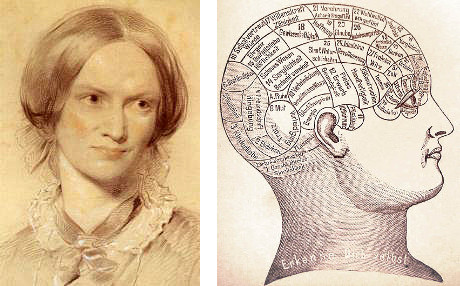
On June 29, 1851, phrenologist J.P. Browne examined a subject he knew only as a “gentlewoman”:
In its intellectual development this head is very remarkable. The forehead is at once very large and well formed. It bears the stamp of deep thoughtfulness and comprehensive understanding. … This lady possesses a fine organ of language, and can, if she has done her talents justice by exercise, express her sentiments with clearness, precision, and force — sufficiently eloquent but not verbose. In learning a language she would investigate its spirit and structure. … In analyzing the motives of human conduct, this lady would display originality and power.
The subject was Charlotte Brontë. She had attended the reading with George Smith, presenting themselves as “Mr. and Miss Fraser.” Phrenology was fashionable at the time, and Charlotte, like many others, was willing to overlook its failures to appreciate its successes. Smith’s reading said, “He is an admirer of the fair sex. He is very kind to children. … Is active and practical though not hustling or contentious.” Smith found this “not so happy,” but Charlotte said, “It is a sort of miracle — like — like — like as the very life itself.”
